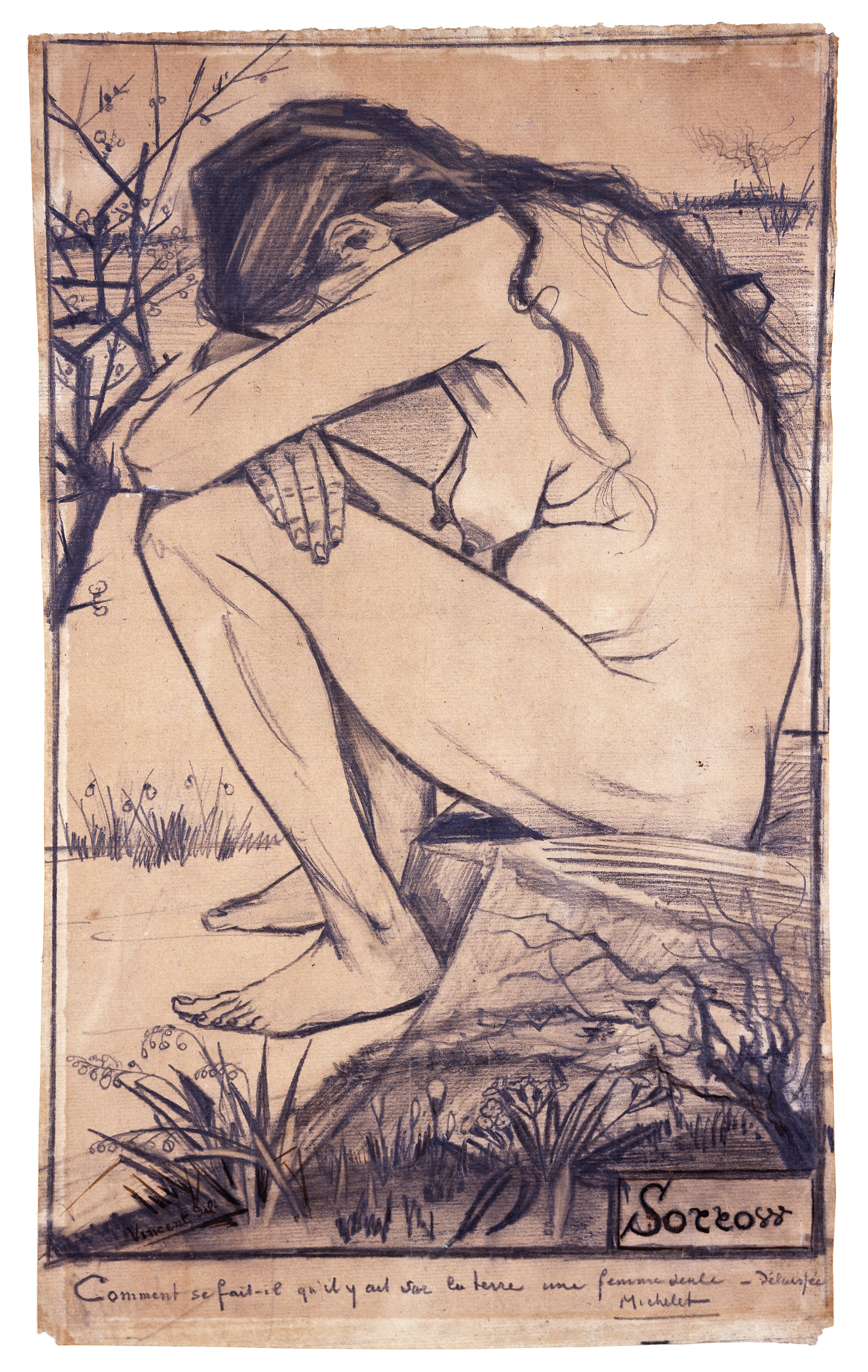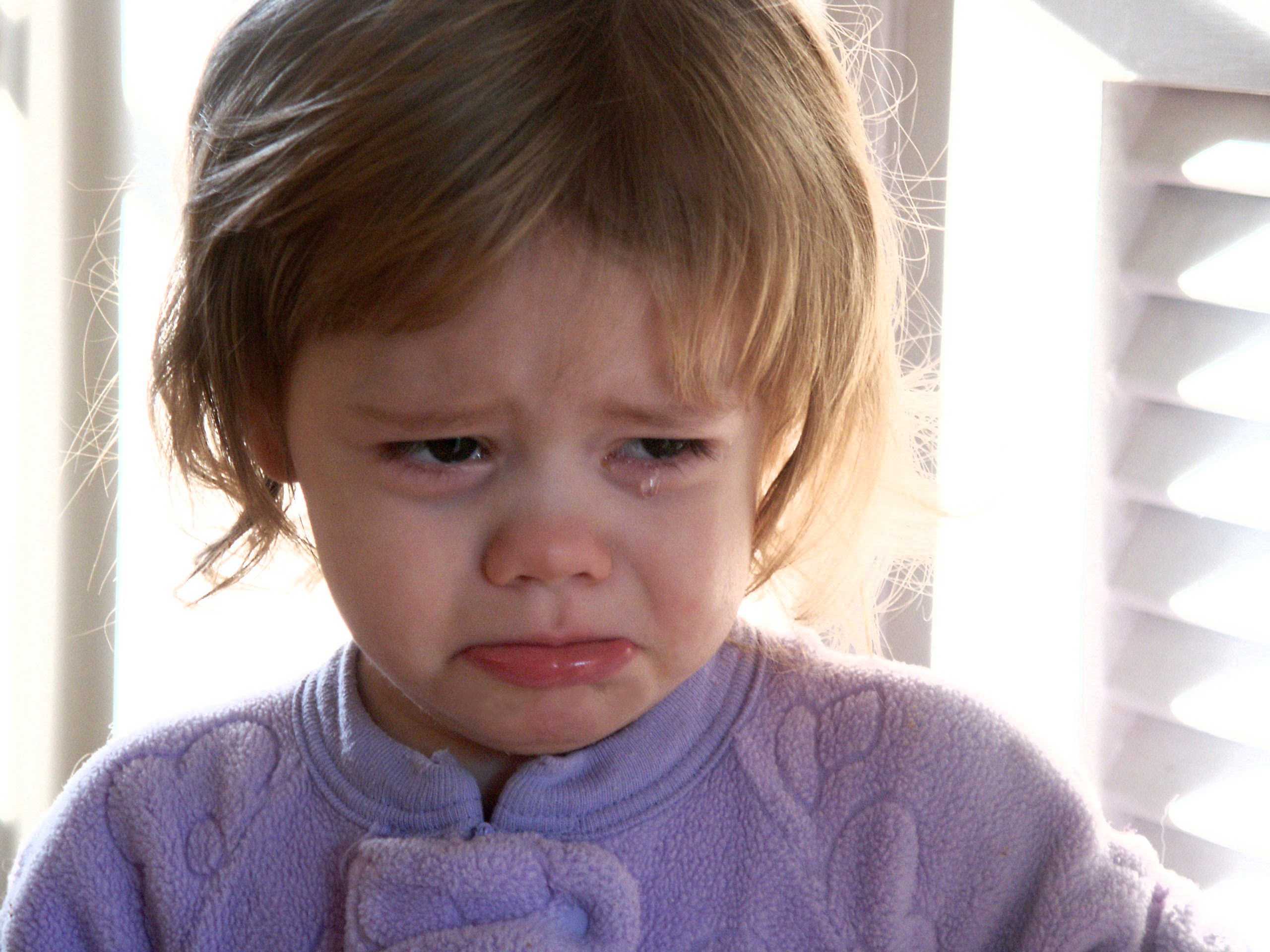|
Sad
Sadness is an emotional pain associated with, or characterized by, feelings of disadvantage, loss, despair, grief, helplessness, disappointment and sorrow. An individual experiencing sadness may become quiet or lethargic, and withdraw themselves from others. An example of severe sadness is depression, a mood which can be brought on by major depressive disorder or persistent depressive disorder. Crying can be an indication of sadness. Sadness is one of the six basic emotions described by Paul Ekman, along with happiness, anger, surprise, fear, and disgust. Childhood Sadness is a common experience in childhood. Sometimes, sadness can lead to depression. Some families may have a (conscious or unconscious) rule that sadness is "not allowed", but Robin Skynner has suggested that this may cause problems, arguing that with sadness "screened off", people can become shallow and manic. Pediatrician T. Berry Brazelton suggests that acknowledging sadness can make it easier ... [...More Info...] [...Related Items...] OR: [Wikipedia] [Google] [Baidu] |
Anger
Anger, also known as wrath or rage, is an intense emotional state involving a strong uncomfortable and non-cooperative response to a perceived provocation, hurt or threat. A person experiencing anger will often experience physical effects, such as increased heart rate, elevated blood pressure, and increased levels of adrenaline and noradrenaline. Some view anger as an emotion which triggers part of the fight or flight response. Anger becomes the predominant feeling behaviorally, cognitively, and physiologically when a person makes the conscious choice to take action to immediately stop the threatening behavior of another outside force. The English word originally comes from the term ''anger'' from the Old Norse language. Anger can have many physical and mental consequences. The external expression of anger can be found in facial expressions, body language, physiological responses, and at times public acts of aggression. Facial expressions can range from inward angling of the ... [...More Info...] [...Related Items...] OR: [Wikipedia] [Google] [Baidu] |
Grief
Grief is the response to loss, particularly to the loss of someone or some living thing that has died, to which a bond or affection was formed. Although conventionally focused on the emotional response to loss, grief also has physical, cognitive, behavioral, social, cultural, spiritual and philosophical dimensions. While the terms are often used interchangeably, bereavement refers to the state of loss, while grief is the reaction to that loss. The grief associated with death is familiar to most people, but individuals grieve in connection with a variety of losses throughout their lives, such as unemployment, ill health or the end of a relationship. Loss can be categorized as either physical or abstract; physical loss is related to something that the individual can touch or measure, such as losing a spouse through death, while other types of loss are more abstract, possibly relating to aspects of a person's social interactions. Grieving process Between 1996 and 2006, ther ... [...More Info...] [...Related Items...] OR: [Wikipedia] [Google] [Baidu] |
Sorrow (emotion)
Sorrow is an emotion, feeling, or sentiment. Sorrow "is more 'intense' than sadness... it implies a long-term state". At the same time "sorrow — but not unhappiness — suggests a degree of resignation... which lends sorrow its peculiar air of dignity".Wierzbicka, p. 66 Moreover, "in terms of attitude, sorrow can be said to be half way between ''sadness'' (accepting) and '' distress'' (not accepting)". Cult Romanticism saw a cult of sorrow develop, reaching back to ''The Sorrows of Young Werther'' of 1774, and extending through the nineteenth century with contributions like Tennyson's " In Memoriam" — "O Sorrow, wilt thou live with me/No casual mistress, but a wife" — up to W. B. Yeats in 1889, still "of his high comrade Sorrow dreaming". While it may be that "the Romantic hero's cult of sorrow is largely a matter of pretence", as Jane Austen pointed out satirically through Marianne Dashwood, "brooding over her sorrows... this excess of suffering" may nevertheless have seri ... [...More Info...] [...Related Items...] OR: [Wikipedia] [Google] [Baidu] |
Major Depressive Disorder
Major depressive disorder (MDD), also known as clinical depression, is a mental disorder characterized by at least two weeks of pervasive low mood, low self-esteem, and loss of interest or pleasure in normally enjoyable activities. Introduced by a group of US clinicians in the mid-1970s, the term was adopted by the American Psychiatric Association for this symptom cluster under mood disorders in the 1980 version of the ''Diagnostic and Statistical Manual of Mental Disorders'' (DSM-III), and has become widely used since. The diagnosis of major depressive disorder is based on the person's reported experiences, behavior reported by relatives or friends, and a mental status examination. There is no laboratory test for the disorder, but testing may be done to rule out physical conditions that can cause similar symptoms. The most common time of onset is in a person's 20s, with females affected about twice as often as males. The course of the disorder varies widely, from one epis ... [...More Info...] [...Related Items...] OR: [Wikipedia] [Google] [Baidu] |
Fear
Fear is an intensely unpleasant emotion in response to perceiving or recognizing a danger or threat. Fear causes physiological changes that may produce behavioral reactions such as mounting an aggressive response or fleeing the threat. Fear in human beings may occur in response to a certain stimulus occurring in the present, or in anticipation or expectation of a future threat perceived as a risk to oneself. The fear response arises from the perception of danger leading to confrontation with or escape from/avoiding the threat (also known as the fight-or-flight response), which in extreme cases of fear (horror and terror) can be a freeze response or paralysis. In humans and other animals, fear is modulated by the process of cognition and learning. Thus, fear is judged as rational or appropriate and irrational or inappropriate. An irrational fear is called a phobia. Fear is closely related to the emotion anxiety, which occurs as the result of threats that are perceived to b ... [...More Info...] [...Related Items...] OR: [Wikipedia] [Google] [Baidu] |
Depression (mood)
Depression is a mental state of low mood and aversion to activity, which affects more than 280 million people of all ages (about 3.5% of the global population). Classified medically as a mental and behavioral disorder, the experience of depression affects a person's thoughts, behavior, motivation, feelings, and sense of well-being. The core symptom of depression is said to be anhedonia, which refers to loss of interest or a loss of feeling of pleasure in certain activities that usually bring joy to people. Depressed mood is a symptom of some mood disorders such as major depressive disorder and dysthymia; it is a normal temporary reaction to life events, such as the loss of a loved one; and it is also a symptom of some physical diseases and a side effect of some drugs and medical treatments. It may feature sadness, difficulty in thinking and concentration and a significant increase or decrease in appetite and time spent sleeping. People experiencing depression may have ... [...More Info...] [...Related Items...] OR: [Wikipedia] [Google] [Baidu] |
Crying
Crying is the dropping of tears (or welling of tears in the eyes) in response to an emotional state, or pain. Emotions that can lead to crying include sadness, anger, and even happiness. The act of crying has been defined as "a complex secretomotor phenomenon characterized by the shedding of tears from the lacrimal apparatus, without any irritation of the ocular structures", instead, giving a relief which protects from conjunctivitis. A related medical term is lacrimation, which also refers to non-emotional shedding of tears. Various forms of crying are known as ''sobbing'', ''weeping'', ''wailing'', ''whimpering'', ''bawling'', and ''blubbering''. For crying to be described as sobbing, it usually has to be accompanied by a set of other symptoms, such as slow but erratic inhalation, occasional instances of breath holding and muscular tremor. A neuronal connection between the lacrimal gland and the areas of the human brain involved with emotion has been established. Tears prod ... [...More Info...] [...Related Items...] OR: [Wikipedia] [Google] [Baidu] |
Persistent Depressive Disorder
Dysthymia ( ), also known as persistent depressive disorder (PDD), is a mental disorder, mental and Abnormal behaviour, behavioral disease#Disorder, disorder, specifically a disorder primarily of mood disorder, mood, consisting of similar cognitive and physical problems as major depressive disorder, but with longer-lasting symptoms. The concept was used by Robert Spitzer (psychiatrist), Robert Spitzer as a replacement for the term "depressive personality" in the late 1970s. In the Diagnostic and Statistical Manual of Mental Disorders (DSM-IV), dysthymia is a serious state of chronic depression, which persists for at least two years (one year for children and adolescents). Dysthymia is not a minor form of major depressive disorder, and for some may be more disabling. As dysthymia is a chronic disorder, those with the condition may experience symptoms for many years before it is diagnosed, if diagnosis occurs at all. As a result, they may believe that depression is a part of their ... [...More Info...] [...Related Items...] OR: [Wikipedia] [Google] [Baidu] |
Disgust
Disgust (Middle French: ''desgouster'', from Latin ''gustus'', "taste") is an emotional response of rejection or revulsion to something potentially contagious or something considered offensive, distasteful, or unpleasant. In ''The Expression of the Emotions in Man and Animals'', Charles Darwin wrote that disgust is a sensation that refers to something revolting. Disgust is experienced primarily in relation to the sense of taste (either perceived or imagined), and secondarily to anything which causes a similar feeling by sense of smell, touch, or vision. Musically sensitive people may even be disgusted by the cacophony of inharmonious sounds. Research has continually proven a relationship between disgust and anxiety disorders such as arachnophobia, blood-injection-injury type phobias, and contamination fear related obsessive–compulsive disorder (also known as OCD). Disgust is one of the basic emotions of Robert Plutchik's theory of emotions, and has been studied extensively ... [...More Info...] [...Related Items...] OR: [Wikipedia] [Google] [Baidu] |
Mood (psychology)
In psychology, a mood is an affective state. In contrast to emotions or feelings, moods are less specific, less intense and less likely to be provoked or instantiated by a particular stimulus or event. Moods are typically described as having either a positive or negative valence. In other words, people usually talk about being in a good mood or a bad mood. There are many different factors that influence mood, and these can lead to positive or negative effects on mood. Mood also differs from temperament or personality traits which are even longer-lasting. Nevertheless, personality traits such as optimism and neuroticism predispose certain types of moods. Long term disturbances of mood such as clinical depression and bipolar disorder are considered mood disorders. Mood is an internal, subjective state but it often can be inferred from posture and other behaviors. "We can be sent into a mood by an unexpected event, from the happiness of seeing an old friend to the anger of discov ... [...More Info...] [...Related Items...] OR: [Wikipedia] [Google] [Baidu] |
Emotional Pain
Psychological pain, mental pain, or emotional pain is an unpleasant feeling (a suffering) of a psychological, non-physical origin. A pioneer in the field of suicidology, Edwin S. Shneidman, described it as "how much you hurt as a human being. It is mental suffering; mental torment." There is no shortage in the many ways psychological pain is referred to, and using a different word usually reflects an emphasis on a particular aspect of mind life. Technical terms include algopsychalia and psychalgia, but it may also be called mental pain, emotional pain, psychic pain, social pain, spiritual or soul pain, or suffering. While these clearly are not equivalent terms, one systematic comparison of theories and models of psychological pain, psychic pain, emotional pain, and suffering concluded that each describe the same profoundly unpleasant feeling. Psychological pain is widely believed to be an inescapable aspect of human existence. Other descriptions of psychological pain are "a wide ... [...More Info...] [...Related Items...] OR: [Wikipedia] [Google] [Baidu] |
Penguin Books
Penguin Books is a British publishing, publishing house. It was co-founded in 1935 by Allen Lane with his brothers Richard and John, as a line of the publishers The Bodley Head, only becoming a separate company the following year."About Penguin – company history" , Penguin Books. Penguin revolutionised publishing in the 1930s through its inexpensive paperbacks, sold through Woolworths Group (United Kingdom), Woolworths and other stores for Sixpence (British coin), sixpence, bringing high-quality fiction and non-fiction to the mass market. Its success showed that large audiences existed for serious books. It also affected modern British popular culture significantly through its books concerning politics, the arts, and science. Penguin Books is now an imprint (trade name), imprint of the ... [...More Info...] [...Related Items...] OR: [Wikipedia] [Google] [Baidu] |










